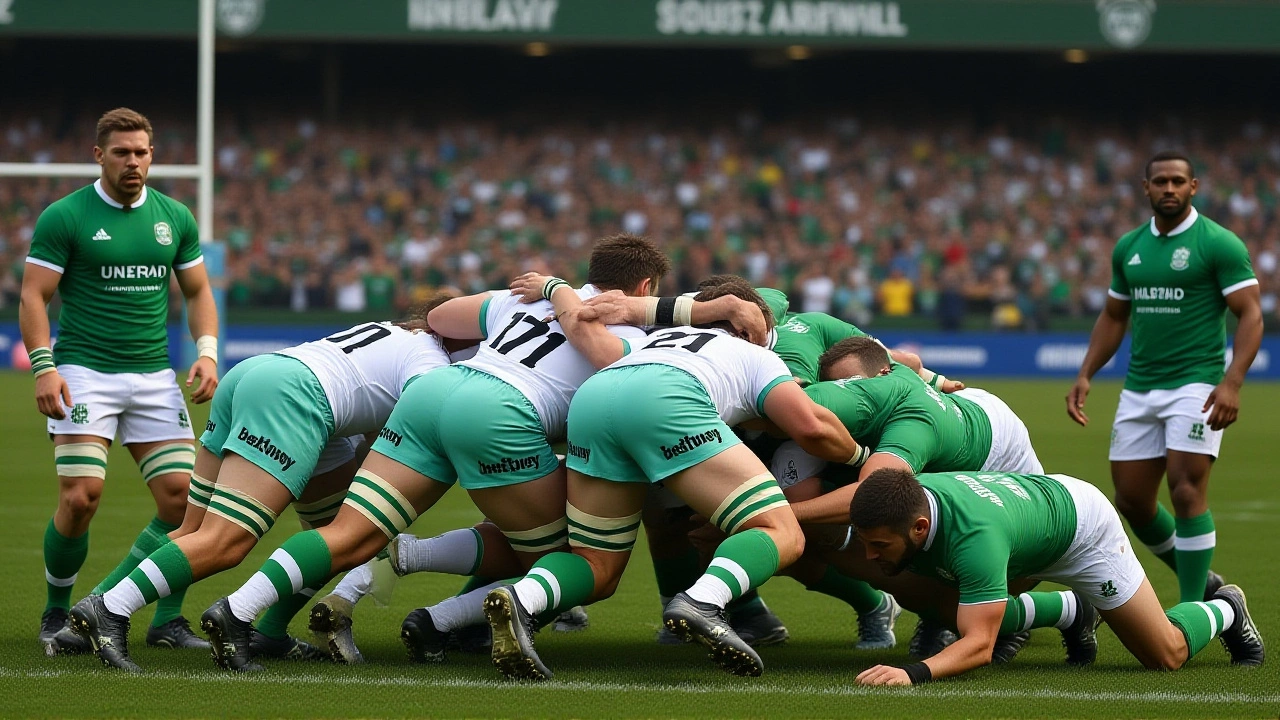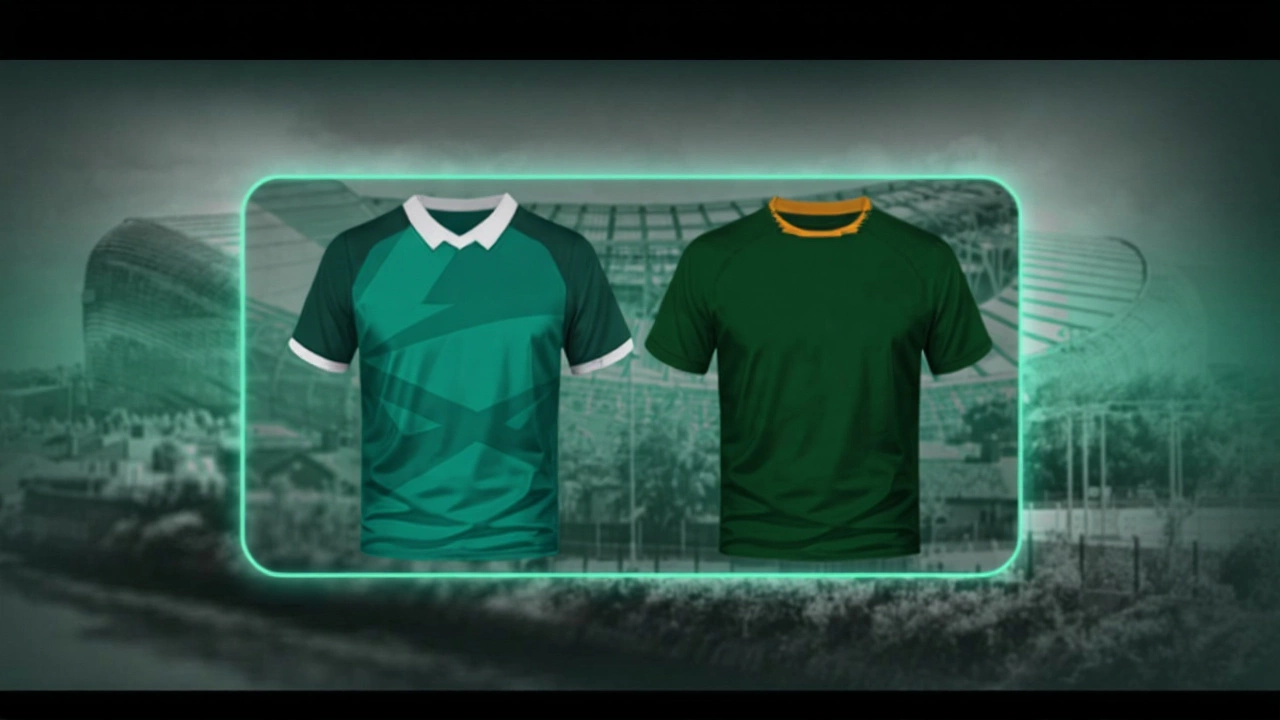The biggest shake-up in international rugby in decades is set to begin on Nations Championship, a new bi-annual global tournament that will pit the traditional powerhouses of the Northern and Southern Hemispheres against each other in a high-stakes, cross-continent battle. The inaugural match kicks off on the Nations ChampionshipAllianz Stadium, Twickenham on Saturday, July 4, 2026 — a date that will live in rugby lore. The final, however, won’t be until November 29, 2026, when the top two teams battle it out under the lights at Twickenham in London, England. This isn’t just another test series. It’s a reimagining of how the world plays rugby — and it’s happening now.
Who’s Playing? The 12 Teams That Redefine Global Rugby
The Nations Championship brings together six teams from the Six Nations — England, Ireland, Scotland, Wales, France, and Italy — with four giants from the Rugby Championship: New Zealand, Australia, South Africa, and Argentina. Then come the wildcards: Fiji and Japan. These two Pacific and Asian powerhouses, long excluded from the elite tier, now get a permanent seat at the table. It’s not just inclusion — it’s elevation.
"The Nations Championship, and its introduction into the international rugby calendar, is a transformational moment for the entire sport," said Ronan Dunne, Co-Chair. "It demonstrates the power of collaboration — not just between unions, but between cultures, continents, and generations of players."
The Structure: A Calendar That Actually Makes Sense
For years, rugby fans have complained about the disjointed international calendar. Test matches scattered across months, teams flying halfway around the world for one-off games, no real stakes. The Nations Championship fixes that. It’s structured in two clear waves: July 2026 sees Northern Hemisphere teams travel south. November 2026 flips the script. Southern Hemisphere teams head north. Then, in the final round, the top six face off against the bottom six — sixth vs. sixth, fifth vs. fifth — in a playoff-style format to determine the champion.
Here’s what the early fixtures look like:
- July 4, 2026: New Zealand vs. France, Australia vs. Ireland, Japan vs. Italy, Fiji vs. Wales, South Africa vs. England, Argentina vs. Scotland
- November 13–15, 2026: France vs. South Africa, Italy vs. Argentina, Wales vs. New Zealand, England vs. Japan, Ireland vs. Fiji, Scotland vs. Australia
- November 21, 2026: England vs. New Zealand, Scotland vs. Japan, Ireland vs. South Africa, Italy vs. Fiji, France vs. Argentina, Wales vs. Australia
And yes — England opens in South Africa. Scotland plays Argentina on opening day, then faces South Africa a week later. Ireland? They’re headed to Australia. The travel is brutal. The stakes? Higher than ever.
The Bigger Picture: World Rugby’s Master Plan
This isn’t happening in a vacuum. The Nations Championship is the centerpiece of a sweeping calendar overhaul announced by World Rugby in 2023. It’s part of a deal with unions, leagues, and players to end the chaos of international fixtures. The goal? More meaningful games. Fewer meaningless tours. More revenue for smaller nations.
Enter the World Rugby Nations Cup — the new second-tier competition launching alongside it in July 2026. Twelve more teams, including Canada, Georgia, Portugal, Chile, Uruguay, and the USA, will compete across the same July and November windows. The winner of the 2025 Rugby World Cup Final Qualification Tournament in Dubai gets the final spot. And here’s the twist: in 2027 and 2029, the top teams from the Nations Cup will play crossover matches against Nations Championship sides — setting up epic underdog battles ahead of the Rugby World Cup 2027Australia and during the British and Irish Lions tour.

What Happens to the Six Nations?
Good news: it’s not going anywhere. The Six Nations, running since 1883, remains intact. It’s now the first act of a two-part play. Teams will play their Six Nations matches in February and March — then head straight into the global tournament in July and November. For fans, that means more rugby. More drama. More reasons to care.
"The Six Nations is sacred," said Tom Harrison, Chief Executive of the Nations Championship. "But if we want rugby to grow beyond its traditional heartlands, we need to create a global stage. This isn’t replacing tradition — it’s expanding it."
Why This Matters
For too long, rugby’s global narrative has been dominated by a handful of nations. The Nations Championship changes that. Fiji and Japan aren’t just guests — they’re full participants with real stakes. That means more exposure, more investment, more kids in Suva and Osaka dreaming of wearing their national jersey on a world stage.
It also means more money. Broadcasters are already circling. Sponsorship deals are in advanced talks. Revenue sharing models are being finalized to ensure even the smallest unions benefit. This isn’t just about who wins — it’s about who gets to play.

What’s Next?
By the end of 2025, all venues, kick-off times, and broadcast partners will be confirmed. The Rugby World Cup 2027 Final Qualification TournamentDubai will determine the 12th team in the Nations Cup. And then? The world waits. For the first time, rugby has a true global championship — not just a tournament, but a tradition in the making.
Frequently Asked Questions
How does the Nations Championship affect the Six Nations schedule?
The Six Nations remains unchanged, running as usual in February and March. The Nations Championship adds two new international windows — July and November 2026 — meaning top teams now play 12+ matches per year. Players face a heavier schedule, but unions are negotiating increased player payments and rest protocols to manage workload.
Why include Fiji and Japan instead of other teams like Samoa or Georgia?
Fiji and Japan were chosen for their global fanbases, commercial appeal, and recent competitive performances. Fiji’s flair and Japan’s disciplined rise — including their historic 2015 World Cup win over South Africa — make them ideal ambassadors. Georgia, while strong, is being positioned for the Nations Cup, where it can develop without the pressure of top-tier competition.
Will the Nations Championship replace the Rugby World Cup?
No. The Rugby World Cup remains the pinnacle, held every four years. The Nations Championship is designed to elevate the space between World Cups, turning test matches into a structured league with tangible stakes. Think of it as the Premier League to the World Cup’s Champions League final.
How will this impact player welfare and injuries?
Player unions are pushing for mandatory rest periods and limits on back-to-back matches. World Rugby has committed to a 14-day minimum recovery window between international windows. Still, with 12 teams playing 10+ matches annually, injury risk is a major concern — especially for forwards. Medical teams are already designing new recovery protocols for the 2026 season.
What’s the financial impact on smaller rugby nations?
Revenue from broadcast and sponsorship will be shared across all 24 teams in the Nations Championship and Nations Cup. Smaller unions like Portugal and Uruguay can expect a 30–50% increase in funding. The goal is to reduce dependency on World Rugby grants and empower unions to invest in grassroots programs — a direct result of the 2023 calendar reform.
When will tickets go on sale, and where will games be played?
Ticket sales are expected to begin in early 2026. While the finals are locked at Twickenham, other venues are still TBC. Expect matches in iconic stadiums like Eden Park, Ellis Park, and the Stade de France — but also in emerging markets like Tokyo’s Tokyo Stadium and Suva’s National Stadium. This is rugby’s first truly global tour.
